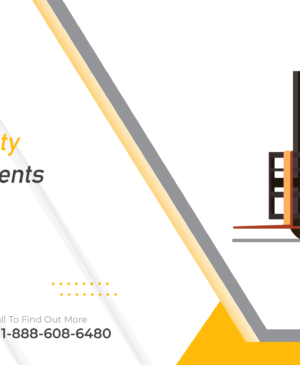A lot of people hate giving presentations in front of an audience, whether it is just one person or an entire Mongolian horde. Unfortunately for research scientists, public speaking is part of the job and can affect how successful you are at getting your ideas heard, advancing your career and receiving more funding.
Here are Scientifica’s top 9 tips for making public speaking easier:
1. Be prepared
The most important part of a successful presentation happens before you even start talking. Once you do begin speaking, you will be thankful for your fastidious preparation and practice.
Create your presentation with lots of time to spare and make notes on all of the points you want to make for each slide. This time will help you ensure that all the materials you need exist and allow for plenty of practice.
If you are going to use a handout, then make sure you have these ready in advance (this is also a useful backup in case of technical difficulties).
Give your presentation to the mirror, your partner/mum/housemate, video camera. Get feedback and watch the recording. Establish where your difficulties lie and any bad habits you might have. Fix them with more practice or by altering the talk.
If there are any difficult to pronounce words or technical jargon, then make sure you can say them. The correct pronunciation and knowledge of industry language will give you credibility.
2. Command the space
Be aware of your body language. The right physical communication can have a profound impact on how your message is received and interpreted.
Here are some ways to improve your body language:
Face your audience and stand with your feet hip distance apart
Make eye contact, but not for too long! You don’t want to appear creepy
Don’t remain rigid, hiding behind a lectern. Move around freely, but don’t pace. Own the available space on the stage
Avoid crossing your arms, clasping your hands behind or in front of your body or hands in pockets.
Don’t fiddle with anything. Keep your hands free for expressive gesticulation.
3. Channel your inner Patrick Stewart
The tone of your voice and how you talk will have a significant impact on the way your talk is received. To speak clearly and confidently you must become like a classically trained actor (e.g. Shakespearean actor and esteemed Star Trek captain Patrick Stewart). Use the 5 ‘P’s to improve the clarity of your speech:
Projection – Make sure the back of the room can hear, but don’t deafen those at the front.
Pace – Keep a steady pace. Your nerves may encourage you to speak faster to get the ordeal over, but that will make it difficult to understand and dampen your message. Try varying the pace to keep things interesting.
Pitch – Vary your pitch, monotonous voices are boring and difficult to listen to but don’t be over the top. Also, try not to use an upward inflexion at the end of all sentences, it makes you sound like you’re unsure about the things you are saying.
Pronunciation – Don’t mumble. Ensure that all of the syllables are clear. Practice hard to say words and phrases.
Pause – Pausing helps the audience to absorb the information they just heard and gives you time to prepare for the next s ection. It also allows a moment for you to collect your thoughts. Additionally, it is better to be silent then use filler words like ‘um’, ‘ah’ and ‘you know’.
4. Know your audience
Scientists often have to give presentations to a variety of people; from school children to the public, undergraduates and other experts in their field. Ensure that the content, language, tone, body language is appropriate for the audience.
Furthermore, try to understand why the audience is listening. Ask: “what will I gain from listening to this talk?” as if you were in the audience yourself. Be clear about your goal and what the audience should o btain by attending. Additionally, establish your credibility. Tell your audience why they should listen to you.
5. Conquer your fear
Easier said than done, but understanding how your nerves affect your ability to speak publicly is a good start. Knowing what might happen will help to calm your nerves and carry on if they start.
Firstly, the more prepared you are, the better and less nervous you will be and the better you will be able to deal with any mishaps.
Do not drink caffeine beforehand it will heighten your anxiety. But do take water in case you get a dry mouth.
Eat something beforehand, a low sugar level won’t help to dispel any nervous thoughts and will also affect your concentration levels.
Remember that the audience is not there to see you. They are much more interested in what you have to say. They also have no interest in you failing; they are your friends not your enemies. Remember that you are speaking as a service to your attendees, this helps focus less on you and more on the content.
Don’t tell the audience you are nervous. Nearly everyone suffers from some anxiety about public speaking; it is rarely as obvious from the outside as it feels.
If necessary, use breathing and relaxation techniques before you begin to help settle any last minute jitters.
6. Throw away your notes
Although you should have written notes on all of the points you want to make for each slide, don’t take them into the presentation with you. (If you must have something in case of an emergency, then create a list of bullet points below your slides in your presentation software.)
Using notes has two key harmful effects on your talk:
Firstly, notes make it appear like you aren’t an expert on the topic. They reduce your credibility.
Secondly, they become something to hide behind to help contain your nerves. If you are looking down at your notes, then you aren’t engaging with your audience. If you aren’t engaging with your audience, then they aren’t listening properly.
Additionally, if you are reading directly from notes then your tone of voice will likely be flat, and you will have minimal stage presence. If this is the case, you might be talking about the most exciting topic on the planet, and your audience may well still be nodding off.
7. Add some style
If you are using presentation slides, then make the most of them. More than being pretty, the slides should be functional, but adding a bit of fun and colour usually doesn’t hurt. Here are three quick tips to improve slides:
Keep the words on each slide to a minimum
Ensure any words or visuals are large enough to be seen at the back of the room
Only include images, videos and animations to help clarify your points. (Don’t add them if they have the opposite effect!)
You don’t want to have everything you are going to say in the slides. Just prompts to help remind you what to talk about and audio/visual media to enhance any point you are making.
8. Try to enjoy yourself (or at least look like it!)
[embedyt] https://www.youtube.com/watch?v=rzX2fWUOnyM[/embedyt]
If you look bored, then the audience will think you are bored. And if you’re bored by the topic, then why should anyone listening be interested? When you come out, have a smile on your face, make it seem like your happy and thankful to be there (even if you’d rather be in bed watching Netflix). If you feel confident enough to do so, add a little humour (as long as it’s appropriate). This will help you and your audience relax, and break the ice if the room is feeling a little tense or unfriendly.
9. Learn from your mistakes (and successes)
Every time you give a presentation, take some time afterwards to think about what worked and what failed. If it went well, consider what made it go well. If it went badly, analyse where and how it went wrong so that next time you can change your strategy and ensure the same thing doesn’t happen again.
Embrace the challenge
Public speaking is part of the life of a research scientist, and you should take every possible opportunity to advocate your work. What is the point of making scientific discoveries (big or small) if no one knows about them?
The best way to deal with the (sometimes unfortunate) need to speak publicly is to embrace it, realize how it will help you and your audience, and enjoy the conversation that it sparks.










Leave a Reply